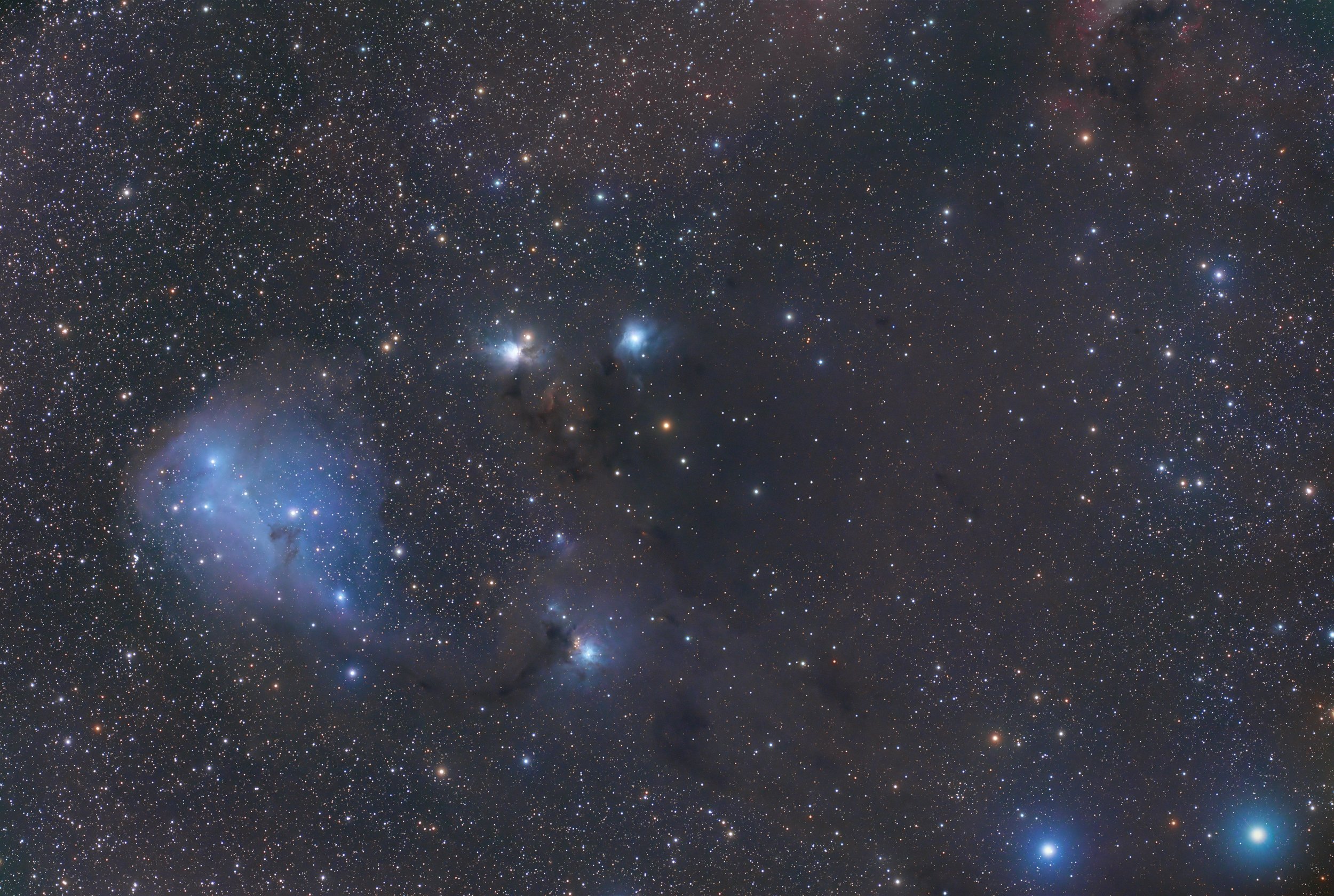
AAPOD2 Image Archives
SNR G132.7+01.3 (HB3)
SNR G132.7+1.3, known as HB3, stretches across a massive 1.5° x 2.0° in the sky as one of the largest supernova remnants in our galaxy. Despite its size, this remnant is faint in the OIII wavelength, demanding a dedicated 140 hours of exposure to bring out its delicate structure. Captured in LRGB-HOO, this image is our most ambitious project yet, completed in collaboration with the AAA team.
NGC 602
Nestled 200,000 light-years away in the Small Magellanic Cloud, the young star cluster NGC 602 lights up the surrounding nebula N90 with its brilliant and energetic stars. Among them is the exceptionally hot O3 star Sk 183, one of the brightest stars fueling this luminous star-forming region. The intense radiation from these massive blue stars carves out cavities in the nebula, shaping swirling regions of ionized gas and dust.
Curiously, a faint, small structure resembling a planetary nebula also appears nearby, possibly identified as SMC-B Bru 2-165. This could hint at earlier stellar generations in this vibrant region, where new stars are born within rich molecular clouds.
Jupiter
Captured during a period of exceptional seeing, this high-resolution image of Jupiter highlights remarkable details across the gas giant’s dynamic cloud tops. The area trailing the iconic Great Red Spot is notably turbulent, filled with intricate gaseous swirls and finely textured details. This turbulent region is emphasized by the planet's fast rotation and shifting atmospheric currents.
Using four derotated images, each compiled from 60-second video captures, the image preserves clarity across multiple frames, enabling a detailed look at Jupiter’s complex cloud structures. The temporary atmospheric stability allowed for this clear and vibrant view of Jupiter's most famous atmospheric features, showcasing both the Great Red Spot and the surrounding bands with excellent sharpness and depth.
Comet C/2023 A3 (Tsuchinshan-ATLAS) – Inner Structures
aptured with remarkable clarity, this image of comet C/2023 A3 (Tsuchinshan-ATLAS) reveals an unobstructed view of its intricate inner structures, free from the distraction of background stars. This high-resolution capture brings forth the delicate textures within the comet's gas and dust tails, showing dynamic formations shaped by solar radiation and the comet's own rotation. Near the nucleus, subtle signs of activity hint at ongoing processes fueling the comet's evolution. The comet’s seemingly suspended appearance against a dark backdrop not only offers astronomers an invaluable perspective on its structure but also provides insights into the mechanisms of cometary disintegration and material dispersal throughout the Solar System.
Ngc 253 AKA The Sculptor galaxy
The Sculptor Galaxy, also known as NGC 253, is a striking spiral galaxy located in the constellation Sculptor, about 11.4 million light-years from Earth. Known as one of the brightest galaxies visible from Earth, it is part of the Sculptor Group, the nearest galaxy group to our Local Group. Its elongated shape and dusty spiral arms filled with star-forming regions give it a dynamic and textured appearance, earning it the nickname the "Silver Coin Galaxy."
NGC 253 is one of the most active star-forming galaxies close to our own, visible even with small telescopes. The galaxy’s vibrant star-forming regions are accentuated in this image, as well as its intricate, dark dust lanes. The Sculptor Galaxy's vigorous stellar nurseries and bright, bluish young star clusters contribute to its status as one of the most visually captivating galaxies in the southern sky.




















